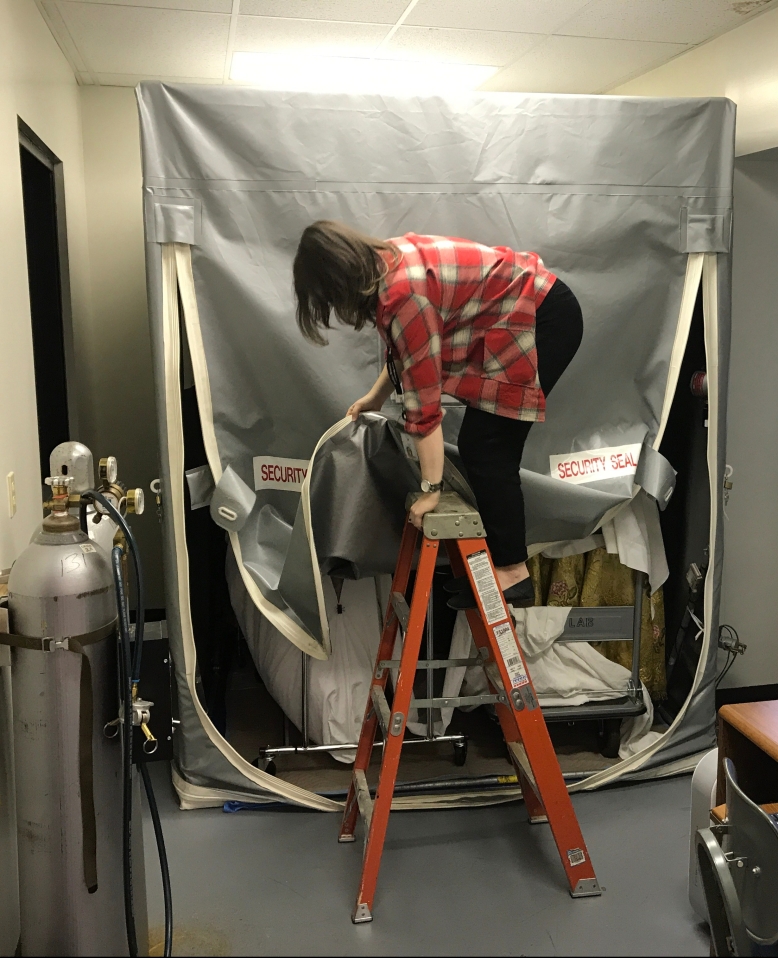
Since September 2018, Melissa has been evaluating environmental data every week for the Winterthur Museum’s Research Building through E-Climate Notebook. Melissa has been monitoring the data to see if the temperature and relative humidity goes outside of Winterthur’s environmental guidelines and whether the relative humidity fluctuates greater than 10% in less than 24 hours. She has been regularly conversing with Winterthur Museum HVAC engineers to better understand the mechanical system for the building. She has also been experimenting with various ways of visualizing the data through the creation of environmental data overlay maps to see if there are any correlations in data that relate to the spatial layout of the building. She will continue to grow these skills through the Spring 2018 semester by continued monitoring and seminars with preventive conservator, Wendy Jessup. You can see an example of a report here.

Integrated Pest Management
Every month Melissa has been practicing her pest identification skills by monitoring the blunder traps in some of the conservation laboratories at Winterthur. She will continue this practice and cement the pest identification learning through the creation of labeled insect illustrations. Along with pest identification, Melissa has been learning several eradication techniques including: freezing and CO2 chambers. She will also be learning alternative anoxic chambers and heat treatments.

Light Monitoring

In January 2019, Melissa worked with two first-year WUDPAC students to take initial colorimetry readings on several objects from the Winterthur collection. Mylar tracings were created for the objects so that the exact location of the initial reading can be reread over the course of the semester. This monitoring will help to determine any color shifting resulting from high light levels. T&D data loggers with attached light sensors were installed near the objects to determine the cumulative exposure on the works. A Lightning Passport spectrometer was used to take a reading of the light spectrum.